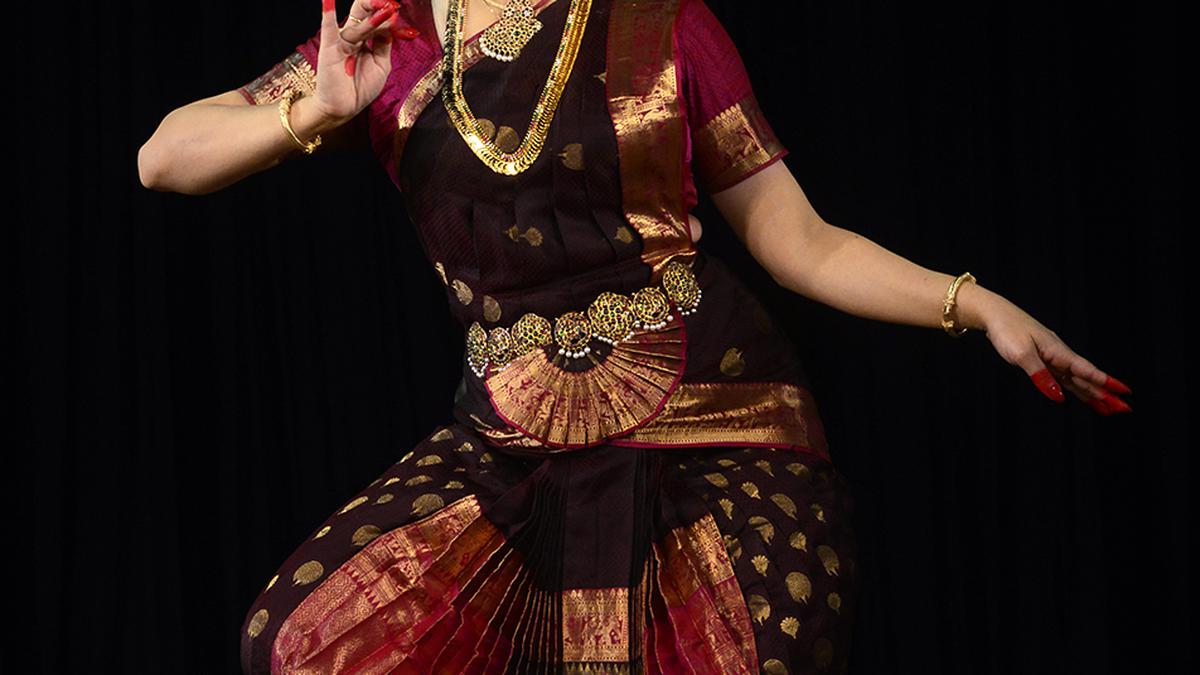
Anwesha Das impresses with her imaginative approach
The Hindu
Anwesha Das’s impressive portrayals
Anwesha Das, a disciple of Urmila Satyanarayanan, is graceful, expressive and hardworking. So how does a good student improve? Once the basics are covered, a dancer’s maturity comes into play. This happens with time and experience and a continued engagement with the art form. Anwesha performed at Narada Gana Sabha’s December Music Festival this year.
In the opening Narasimha Misra alarippu from ‘Yadagiri Narasimha Suprabhatham’, one could recognise the dancer’s progress — she is maturing in her bhava. She kept rhythm effortlessly as the choreography went through a series of slower and faster tala cycles.
The melodious Khamas Daru varnam by Harikesanallur Muthiah Bhagavatar dedicated to Devi in Kannada, which lasted more than 30 minutes, had some taxing parts with the fast-paced tisra jathi, the Chamundeshwari episode, the mukthayi swara, and sahitya. The pace appeared good but had a fallout in incomplete finishes. Anwesha can improve on her groundedness, if she can be lighter on her feet. However, her energy level sustained all through.
When Meenakshi sees Sundareshwara for the first time it was a defining moment; the dancer held her gaze for long, slowly dropping her arms and finally her gaze shyly to realise the third breast has disappeared. The subtlety she has developed was showcased in the Kapi javali ‘Sarasamuladetanduku’ (Poochi Srinivasa Iyengar) when she plays a sweeya nayika dealing with an impatient husband. She is nervous of being seen by her family and is yet flattered by his attention. She agrees on a time, gives him a peck and runs away with a glint in her eye — the scene said it all.
Tulasidas’ ‘Tumaka chalatha ramachandra’ in Misra Khamaj may have been close to the daru theoretically but was handled differently in musical terms by Binu Venugopal (vocal), with the help of Ishwar Ramakrishnan (violin) and Muthukumar (flute).
Urmila (nattuvangam) guided the musicians and dancer with skill, along with Nagai Sriram (mridangam), who kept her company in the rhythmic finishes. The team went back to the theme of Narasimha and closed with an animated Annamacharya kriti in Atana, Adi ‘Kadiri nrsmhudu’ on the story of Prahlada and Narasimha and a Narasimha mangalam.











